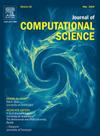AGDFCDA:用于circrna -疾病关联预测的自适应图卷积网络和双特征
IF 3.7
3区 计算机科学
Q2 COMPUTER SCIENCE, INTERDISCIPLINARY APPLICATIONS
引用次数: 0
摘要
环状RNA (circRNA)是一种特殊类型的RNA分子,其结构呈闭环结构。大量研究表明,circRNA的异常表达与多种疾病的发生发展密切相关。准确预测circRNA与疾病之间的关联对于理解疾病的发病机制和发现潜在的生物标志物非常重要。然而,传统生物实验的高成本和复杂性限制了研究的发展。通过构建计算模型并进行生物信息学分析,可以更有效地识别疾病相关的circRNA并揭示其潜在机制。本文提出了一种基于双特征提取策略的circrna -疾病关联预测计算模型AGDFCDA。该策略一方面利用全连接神经网络减少初始特征中的冗余信息,同时初步提取circRNA和疾病的隐藏信息。另一方面,该策略引入自适应图卷积网络,学习更全面的circRNA和疾病表征,实现特征的进一步提取。AGDFCDA使用五倍交叉验证进行评估,结果表明它在预测circrna -疾病关联方面优于比较方法。此外,案例研究的结果可以为湿法实验提供可靠的候选circRNA,从而有效地节省成本。本文章由计算机程序翻译,如有差异,请以英文原文为准。
AGDFCDA: Adaptive graph convolutional network and dual feature for circRNA-disease association prediction
Circular RNA (circRNA) is a special type of RNA molecule whose structure presents as a closed loop. Numerous studies have demonstrated that abnormal expression of circRNA is closely associated with the development of diverse diseases. Accurately predicting the association between the circRNA and disease is important for understanding the pathogenesis of disease and discovering potential biomarkers. However, the high cost and complexity of traditional biological experiments limit the development of research. By constructing computational models and performing bioinformatics analysis, it is possible to identify disease-related circRNA more efficiently and reveal its potential mechanism. This paper presents AGDFCDA, a computational model for circRNA-disease association prediction, featuring a dual feature extraction strategy. On the one hand, the strategy applies the fully connected neural network to reduce the redundant information in the initial features, while the hidden information of circRNA and disease is preliminarily extracted. On the other hand, the strategy introduces adaptive graph convolutional network to learn more comprehensive representation of circRNA and disease to realize further extraction of features. AGDFCDA is assessed using five-fold cross-validation, and the results indicate that it outperforms the comparison methods in predicting circRNA-disease associations. In addition, the results of case studies can provide reliable candidate circRNA for wet experiments to be carried out with effective cost savings.
求助全文
通过发布文献求助,成功后即可免费获取论文全文。
去求助
来源期刊

Journal of Computational Science
COMPUTER SCIENCE, INTERDISCIPLINARY APPLICATIONS-COMPUTER SCIENCE, THEORY & METHODS
CiteScore
5.50
自引率
3.00%
发文量
227
审稿时长
41 days
期刊介绍:
Computational Science is a rapidly growing multi- and interdisciplinary field that uses advanced computing and data analysis to understand and solve complex problems. It has reached a level of predictive capability that now firmly complements the traditional pillars of experimentation and theory.
The recent advances in experimental techniques such as detectors, on-line sensor networks and high-resolution imaging techniques, have opened up new windows into physical and biological processes at many levels of detail. The resulting data explosion allows for detailed data driven modeling and simulation.
This new discipline in science combines computational thinking, modern computational methods, devices and collateral technologies to address problems far beyond the scope of traditional numerical methods.
Computational science typically unifies three distinct elements:
• Modeling, Algorithms and Simulations (e.g. numerical and non-numerical, discrete and continuous);
• Software developed to solve science (e.g., biological, physical, and social), engineering, medicine, and humanities problems;
• Computer and information science that develops and optimizes the advanced system hardware, software, networking, and data management components (e.g. problem solving environments).
 求助内容:
求助内容: 应助结果提醒方式:
应助结果提醒方式:


